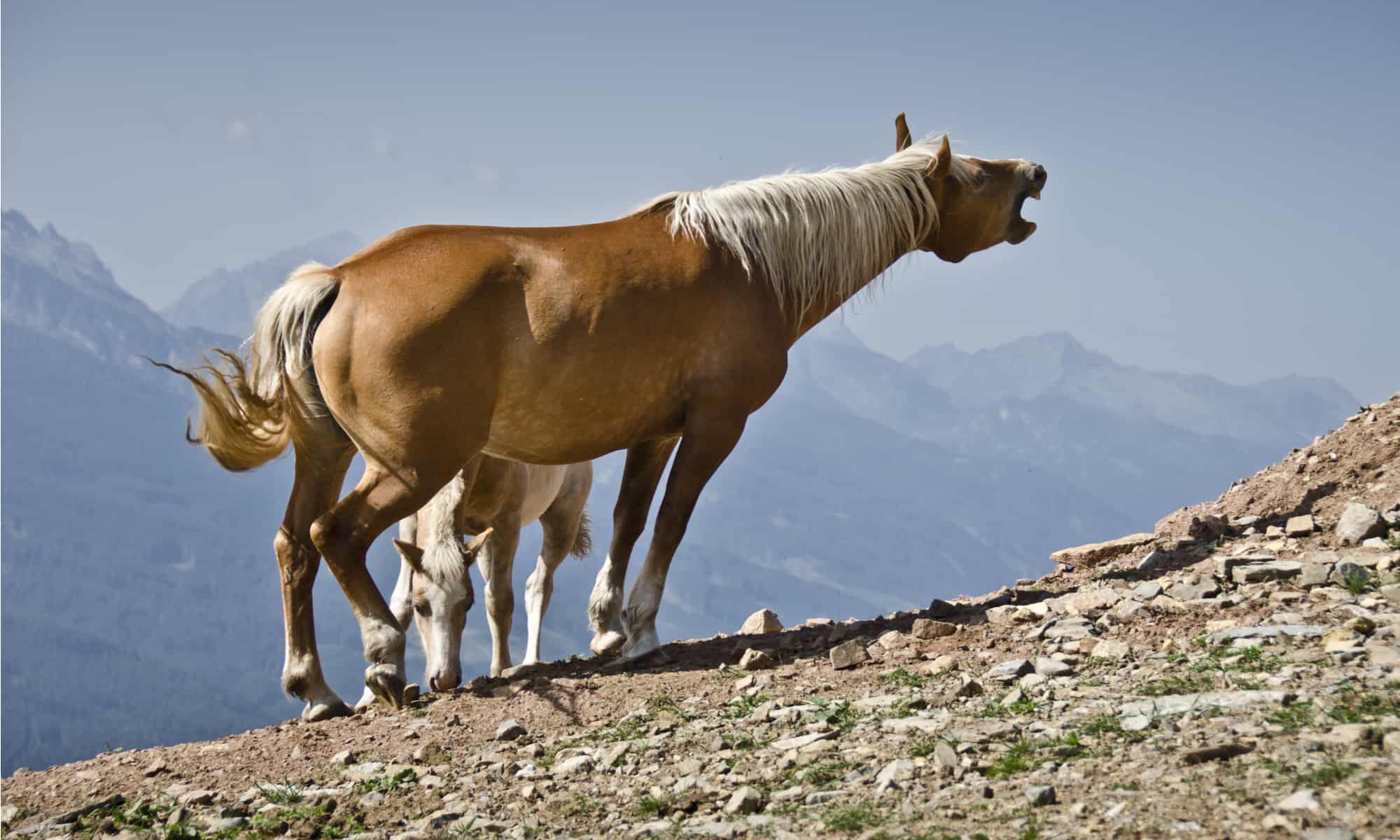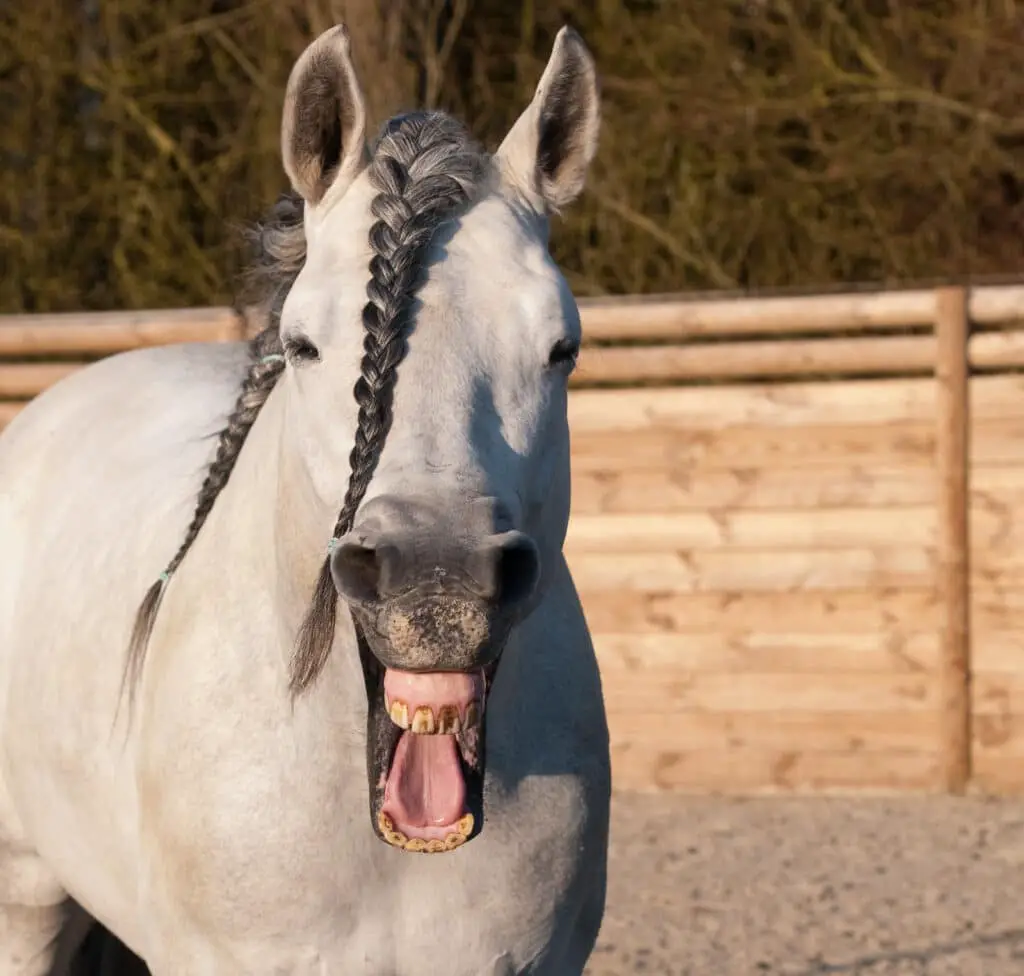Horses are magnificent creatures that have long been a symbol of grace, strength, and beauty. One of the most iconic sounds associated with horses is their distinctive neighing. Whether you are a seasoned equestrian or simply an admirer of these majestic animals, you may have wondered why horses neigh. In this blog post, we will explore the reasons behind this vocalization and delve into the fascinating world of equine communication.
Understanding Equine Communication

Before we can fully grasp the meaning behind a horse’s neigh, it’s essential to understand the broader context of equine communication. Horses are highly social animals that rely on a complex system of vocalizations, body language, and gestures to interact with each other and their human counterparts. Neighing is just one facet of their intricate communication repertoire, and it serves various purposes depending on the situation.
Social Bonds and Identification
One of the primary reasons horses neigh is to establish and maintain social bonds within their herd. When a horse neighs, it can convey a range of emotions, from excitement and anticipation to distress and anxiety. In a natural herd setting, horses use their vocalizations to recognize each other, express their presence, and coordinate group activities. This form of communication helps them maintain a cohesive and harmonious social structure within the herd.
Expressing Emotions
Similar to humans, horses use vocalizations as a means of expressing their emotions. A joyful whinny can signal a horse’s excitement at the sight of a familiar companion or the anticipation of being fed. Conversely, a high-pitched and prolonged neigh may indicate distress, fear, or discomfort. By paying attention to the nuances of a horse’s vocalizations, experienced handlers and riders can gain valuable insights into the animal’s state of mind and well-being.
Alerting and Signaling
In the wild, horses rely on their keen senses to detect potential threats and predators. Neighing can serve as an alerting mechanism, allowing a horse to signal danger to its herd members. By emitting a loud and distinctive call, a vigilant horse can prompt others to be on high alert and take evasive action if necessary. This form of communication helps ensure the collective safety and survival of the group in their natural environment.
Forming Human-Horse Bonds
Beyond their interactions with fellow equines, horses also use neighing as a means of forming bonds with humans. When domesticated horses engage in positive interactions with their caretakers, they may express their contentment and affection through soft and gentle whinnies. This form of communication fosters trust and mutual understanding between horse and rider, strengthening the emotional connection that underpins the equestrian partnership.
The Science Behind Neighing

While the behavioral and social aspects of equine vocalizations are fascinating, understanding the scientific mechanisms behind a horse’s neigh adds another layer of intrigue to this subject. A horse’s vocal apparatus is a marvel of evolutionary adaptation, allowing these animals to produce a diverse range of sounds with remarkable clarity and resonance.
Anatomy of Equine Vocalizations
The primary vocalization produced by horses is the characteristic whinny, which is a multi-component sound consisting of both low-frequency and high-frequency elements. The production of these complex vocalizations is facilitated by the unique anatomical structure of a horse’s larynx, pharynx, and nasal passages. The resonant quality of a horse’s neigh can carry over long distances, making it an effective means of long-distance communication in open environments.
Neurological and Behavioral Factors
Beyond their physical anatomy, the production of vocalizations in horses is influenced by various neurological and behavioral factors. Studies have shown that horses possess a highly developed limbic system, which governs their emotional responses and social interactions. This neural complexity allows horses to modulate the pitch, intensity, and duration of their vocalizations based on their current emotional state and environmental context.
Environmental Influences on Neighing
The natural environment in which a horse is raised and kept can also shape its vocalization patterns. Horses that have been exposed to diverse auditory stimuli from a young age may develop a broader and more nuanced vocal repertoire compared to those raised in quieter or more isolated settings. Additionally, factors such as herd dynamics, social hierarchy, and individual temperament can influence the frequency and intensity of a horse’s neighing behavior.
Neighing in Training and Competition

For those involved in equestrian sports and competitive riding, understanding the nuances of a horse’s vocalizations can be instrumental in creating a harmonious and effective training environment. Neighing can provide valuable feedback on a horse’s physical and emotional state, allowing trainers and riders to tailor their approach and address any underlying issues that may be impacting the animal’s performance.
Recognizing Pain and Discomfort
Neighing can be a telltale sign of pain, discomfort, or physical strain in a horse. During training sessions or competitive events, attentive handlers and riders should be alert to any changes in a horse’s vocal behavior, particularly if the animal emits high-pitched or persistent whinnies. These vocal cues can indicate the presence of musculoskeletal issues, saddle discomfort, or other sources of physical distress that require prompt attention and intervention.
Emotional Regulation and Stress Management
In high-stakes competitive environments, horses may experience heightened levels of stress and anxiety, which can manifest in their vocalizations. By recognizing and addressing signs of emotional distress, trainers and riders can implement strategies to help horses manage their stress levels and perform at their best. This may involve incorporating relaxation techniques, creating a calm and predictable training routine, and providing reassurance and support to the equine athletes.
Building Trust and Confidence
Effective communication between rider and horse is essential for fostering a trusting and collaborative partnership. Neighing can offer valuable insights into a horse’s emotional responses to training cues, allowing riders to adjust their approach and build a positive reinforcement-based training program. By acknowledging and responding to a horse’s vocalizations in a supportive and empathetic manner, riders can strengthen the bond of trust and confidence with their equine companions.
The Cultural and Symbolic Significance of Neighing

Beyond its practical and biological functions, the act of a horse neighing holds profound cultural and symbolic significance in various societies around the world. Throughout history, horses have been revered as symbols of power, freedom, and nobility, and their vocalizations have often been associated with spiritual and mythical interpretations.
Mythology and Folklore
In many cultures, horses are revered as sacred beings with a deep connection to the natural world and the divine. Ancient myths and folklore often depict horses as mystical creatures capable of transcending the boundaries between the earthly realm and the spiritual domain. The haunting melody of a horse’s neigh has been woven into countless legends and tales, evoking themes of courage, destiny, and the enduring bond between humans and horses.
Artistic and Literary Representations
From ancient cave paintings to contemporary literature and art, horses and their vocalizations have served as potent sources of inspiration for creative expression. The powerful imagery of a horse rearing and neighing has been immortalized in countless works of art, symbolizing strength, vitality, and untamed beauty. Poets, writers, and visual artists alike have drawn upon the evocative nature of equine vocalizations to convey themes of passion, resilience, and the indomitable spirit of the horse.
Modern Interpretations
In today’s society, the symbolism of a horse’s neigh continues to resonate with people on a deep and emotional level. Whether it’s the stirring call of a wild stallion echoing across the plains or the spirited whinny of a beloved companion greeting its human caretaker, the sound of a horse neighing evokes a sense of awe and reverence. For many, it serves as a reminder of the enduring bond between humans and horses, transcending language and culture to touch the hearts of people around the world.
Curious about horse behavior and habits? Explore our articles on why horses yawn, why horses buck, and why horses are shod for a deeper understanding of these majestic animals.
Conclusion

The enigmatic and evocative nature of a horse’s neigh has captivated the human imagination for centuries. From its role in equine communication to its cultural symbolism, the act of neighing embodies the essence of the horse as a majestic and enigmatic creature. By understanding the multifaceted meanings behind a horse’s vocalizations, we can deepen our appreciation for these remarkable animals and forge deeper connections with them as partners, companions, and guardians of our collective heritage.



